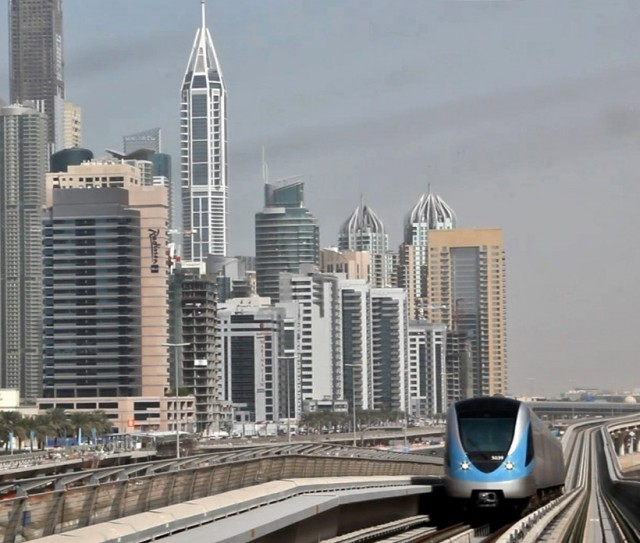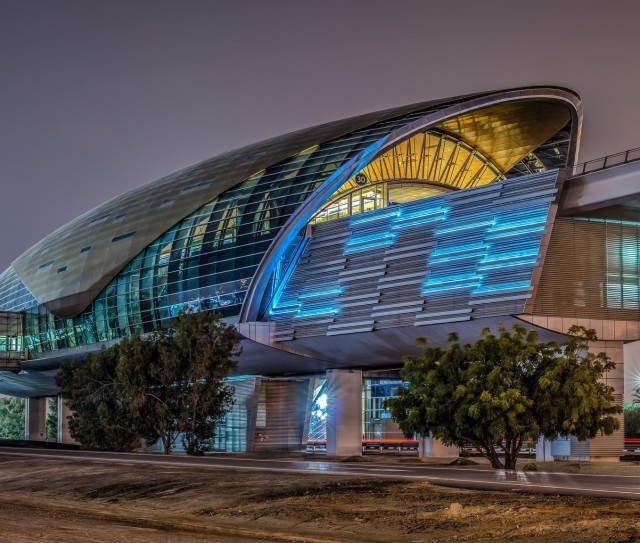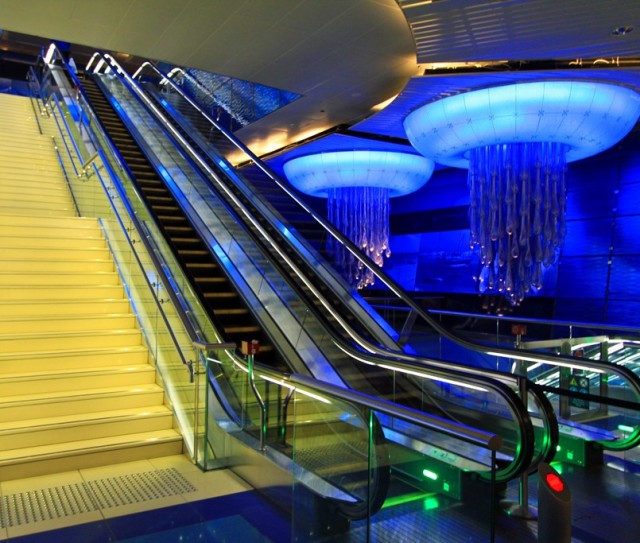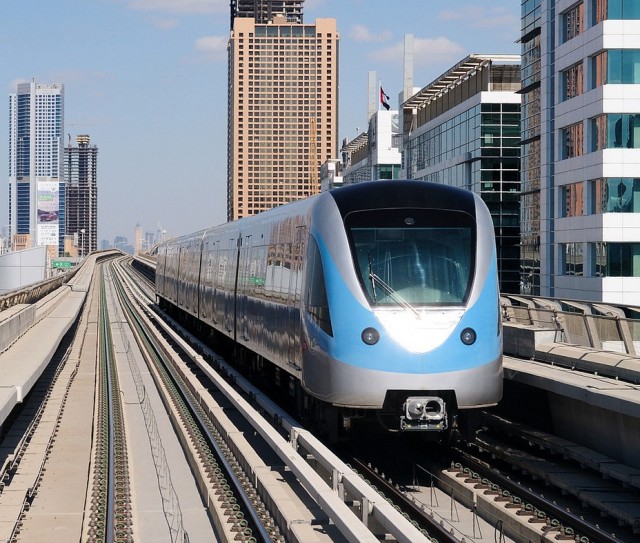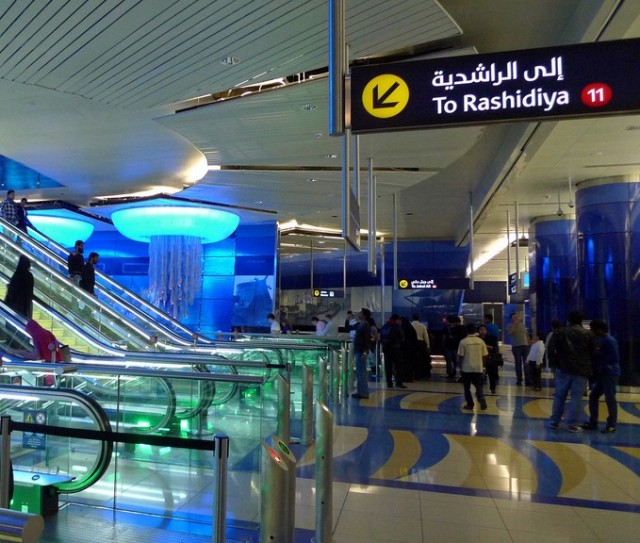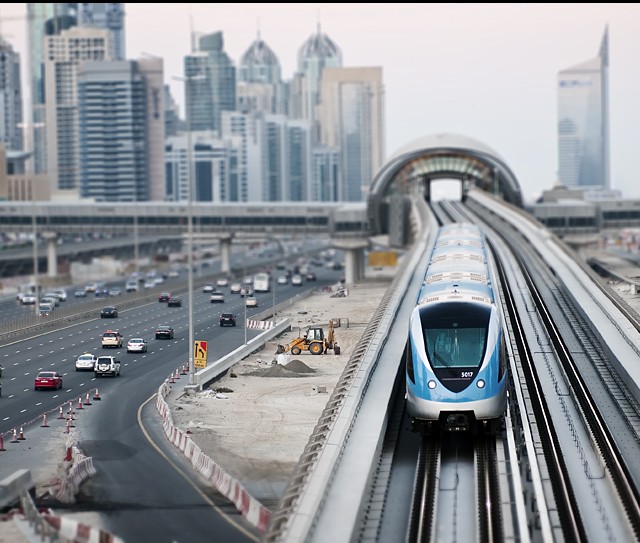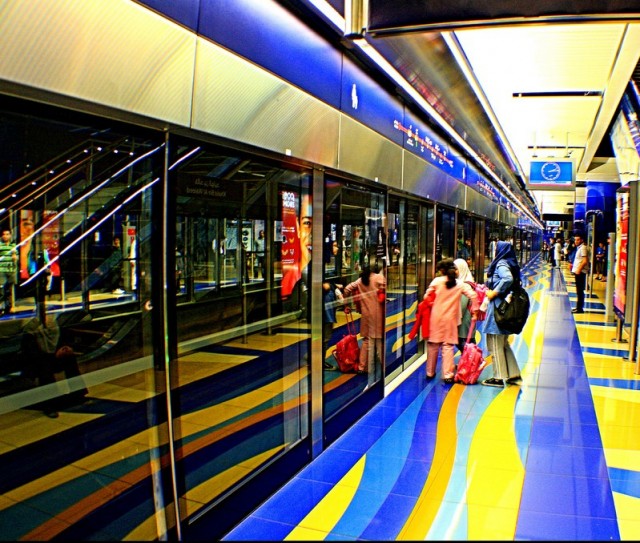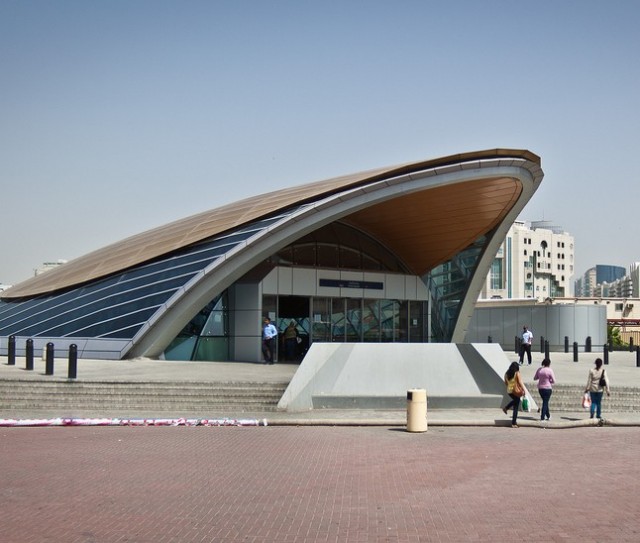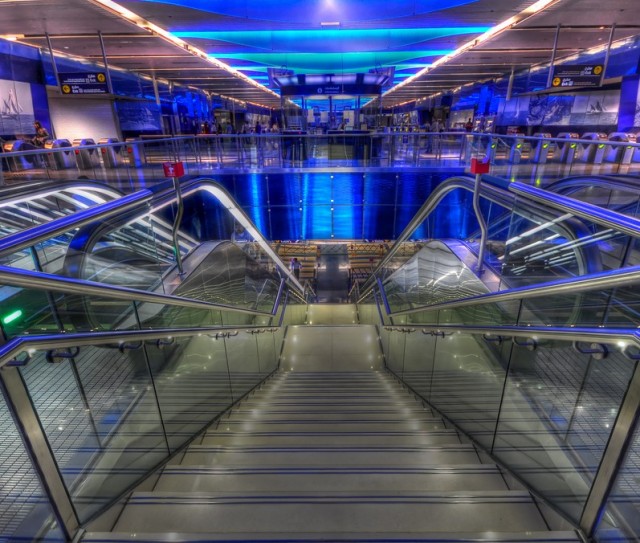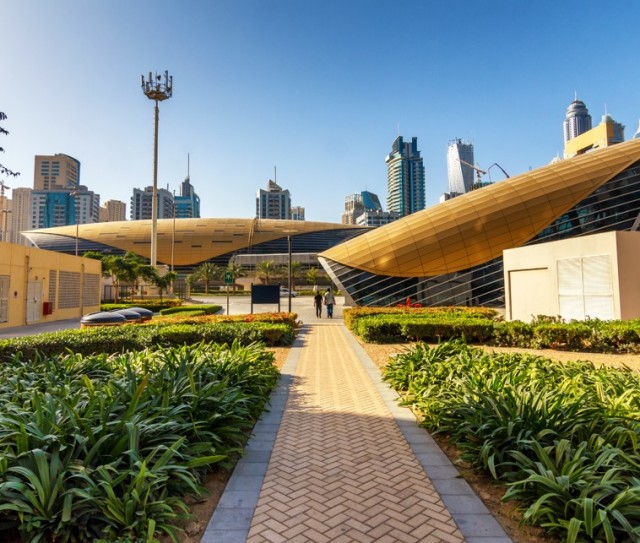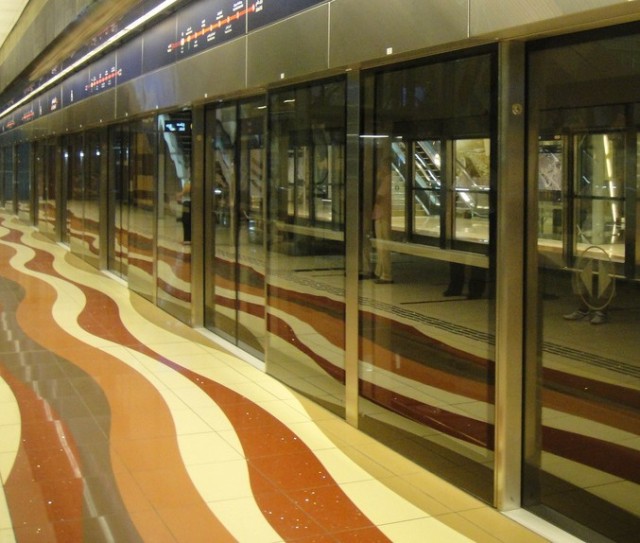Info
The Dubai Metro stands as a testament to the remarkable progress and ambition of the emirate. It holds the distinction of being the first metro on the Arabian Peninsula and is recognized as one of the most contemporary metro systems globally. Its inception aimed to bolster the transportation infrastructure of this rapidly expanding emirate's capital.
The Dubai Metro embarked on its historic journey with the inauguration of its first section, which featured 10 stations connecting the Al Rashidya area to Naklih Bay. This momentous occasion occurred on September 9, 2009, at precisely 9 hours, 9 minutes, and 9 seconds. Presently, the Dubai Metro comprises two lines, primarily traversing viaducts, with two additional lines under construction, promising further connectivity. It serves as a reliable, swift mode of public transportation, ferrying over 600,000 passengers daily. The metro network blankets the city center, extending northward to Jebel Ali along the coast of the Persian Gulf, tracing the iconic Sheikh Zayed Road. With Dubai Metro, you can seamlessly reach Dubai International Airport and access the emirate's premier attractions, including the Burj Khalifa skyscraper, Al Fahidi Fort, Jumeirah Mosque, and The Dubai Mall.
Externally, Dubai Metro stations are architecturally distinctive, resembling seashells—an homage to the emirate's historical ties to pearl fishing. Accessibility is a priority, with all entrances featuring escalators and elevators, and transitions equipped with travelators. Inside these stations, passengers find a clean, spacious, and air-conditioned environment, maintained at a comfortable 20°C. The modern interior design elegantly combines traditional ethnic elements and symbolically represents the four elements: earth, water, fire, and air.
Glass partitions segregate the platforms from the tracks, synchronized with the train doors for safety. Dubai Metro trains operate autonomously and consist of five carriages. Notably, the first and last carriages are divided, reserving one carriage for Gold class passengers and the other exclusively for women. Regulations prohibit eating, drinking, smoking, sleeping, or transporting bicycles or animals both on trains and within station premises.
Lines
The Dubai Metro, a vital part of the city's modern infrastructure, is composed of two lines: the red line and the green line. While most of the tracks are above ground, there are also small underground sections. This comprehensive network provides a convenient means of traversing Dubai, connecting major entertainment hubs, and ensuring easy access to the airport. It's no wonder that over 600 thousand people rely on the Dubai Metro's services each day. With a total length of 89.6 kilometers, the metro system boasts 53 stations, strategically positioned to serve passengers across the city.
The Dubai Metro operates throughout the week with slightly varied hours: Monday to Saturday: 5:00 AM to 12:00 AM, Fridays: 5:00 AM to 1:00 AM, Sundays: 8:00 AM to 12:00 AM.
Fare
Dubai's transportation network is divided into 7 zones, each featuring Metro stations, Bus stations, Tram stations, and Water bus stations. Travelers can seamlessly switch between different modes of transportation within these zones, and the fare calculation is based on the total number of zones crossed during the journey. To facilitate end-to-end trips, transfers across various modes are permitted, but there's a time constraint: travelers must complete transfers within 30 minutes. For instance, you can start your journey on the metro and then transfer to a bus to reach your final destination. If you check-out from the metro station and check-in on a bus within 30 minutes, your metro and bus rides will be charged as a single journey, with the fare determined by the combined number of zones crossed in both trips.
The cost of Dubai metro journey depends on the distance traveled and the chosen comfort class. Here's a breakdown of the Dubai metro fares:
Travel within One Zone costs AED 4.00
Travel within Two Zones costs AED 6.00
Crossing More Than Two Zones costs AED 8.50
For those seeking a premium experience, Gold Class tickets are available at double the standard fare. Regardless of your chosen fare, all tickets remain valid for 180 minutes and allow up to 3 free transfers within the Dubai transportation network. Children under 6 years old can travel on Dubai's public transport at no cost.
Ticketing
To access the metro and other public transport options in Dubai, you'll need to acquire a Nol card, as no other forms of payment, such as cash or credit cards, are accepted. Nol cards come in four different colors, each designed to cater to different travel preferences on Dubai's extensive public transportation network, which includes buses, trams, and water buses. The Nol cards can be bought at any of the Dubai Metro stations, tram stations or bus stations.
Red Nol Card: This card is perfect for those with irregular transportation needs. It's issued as a paper ticket, has a validity of 90 days, and can be purchased for AED 2.00. You can load it with the cost of 10 individual trips. The Red Nol Card can be used across all three modes of public transport in Dubai: Metro, Tram, and Bus. Additionally, you have the option to add a one-day ticket to this card for added convenience.
Silver Nol Card: If you plan to use the Dubai Metro and other public transport modes intermittently or regularly, the Silver Nol Card is your best choice. It's priced at AED 25.00, which includes AED 19.00 in credits, and remains valid for a generous 5-year period. This card can be easily topped up to a maximum value of AED 1000.00, making it suitable for various commuting needs. While Gold and Blue Nol Cards exist, they are less commonly used by tourists and visitors.
To ensure a smooth journey and make the most of your Nol card always remember to check in and out when using buses and trams. Failing to do so may result in being charged the highest fare possible for your journey, which corresponds to the maximum number of zones crossed.
 English
English Deutsch
Deutsch Français
Français Italiano
Italiano Español
Español Português
Português Русский
Русский Українська
Українська Polski
Polski Čeština
Čeština Ελληνικά
Ελληνικά Türkçe
Türkçe Tiếng Việt
Tiếng Việt ไทย
ไทย 日本語
日本語 中文
中文 한국어
한국어